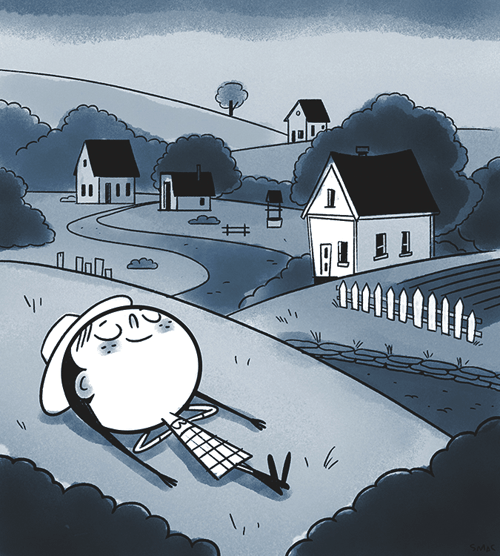Canadian comics get a second chance
The mid- to late 1970s brought a wave of nostalgia to comics, and with it, Canada’s Silver Age. These comics, consistent in their production values with most mainstream (i.e., U.S.) comics of the day, stood out for their independence, and, subsequently, a defiance of the visual standard of conventional comics. Two of the best examples were Captain Canuck and Cerebus. The former, while boasting excellent art, was most captivating and memorable for its advanced colour production, while Cerebus was known for its biting satire of politics, comics, and religion, not to mention creator Dave Sim’s wispy linework.
Another product of this “new wave,” and a perfect transition to the self-published zine trend that exploded throughout Canada in the ’80s, was the sci-fi fanzine – titles such as Orb and Andromeda, and later Quadrant and Orion. While containing a multitude of literary mediums, the works they featured were demonstrative of the transition comics were making from predominantly superhero-focused to a mixed bag of art and storytelling styles.
By the early ’80s, basic printing became cheaper and more accessible, leading to a greater emergence of self-publishing in Canada. A byproduct of this era is the autobiographical comic – fodder for many an independent creator’s book. A true testament to how popular these comics were can be found in the number of creators who launched notable careers by publishing them, including Julie Doucet and Chester Brown.
In 1982, Vortex Comics began publishing alternative comics in a more polished mainstream style. Its two most noted titles boasted an array of both homegrown and international talent – Brown’s Yummy Fur (a continuation of his self-published comic) and Dean Motter’s Mister X, featuring the work of Jaime and Gilbert Hernandez, Howard Chaykin, and a young Seth.
 Many alternative publishers faced financially difficult times toward the end of the decade as the already small market became oversaturated. While Vortex succumbed to this decline, the professional standard for alternative comics remained. When Drawn & Quarterly’s eponymous anthology series launched at the dawn of the ’90s, it picked up where Vortex left off, eventually becoming one of the largest publishers of its kind, and putting Canada on the cutting edge of comics publishing. — Rachel Richey
Many alternative publishers faced financially difficult times toward the end of the decade as the already small market became oversaturated. While Vortex succumbed to this decline, the professional standard for alternative comics remained. When Drawn & Quarterly’s eponymous anthology series launched at the dawn of the ’90s, it picked up where Vortex left off, eventually becoming one of the largest publishers of its kind, and putting Canada on the cutting edge of comics publishing. — Rachel Richey

CANADIAN COMICS COME TO THE FORE
The War Exchange Conservation Act of 1940 cut off Canada’s supply of U.S.-produced superhero comics, inadvertently creating a prosperous Canadian comic industry. Many publishers got in on the act, the best-known among them being Bell Features, and between them published nearly 20 different “Canadian Whites” – comics with colour covers and black-and-white interiors. Bell introduced Canadian-specific heroes such as Johnny Canuck and Nelvana of the Northern Lights – one of the world’s first female superheroes, predating Wonder Woman by several months. Ironically, Bell’s success was short-lived. Once the War Exchange act was lifted and U.S. titles once again flooded into the country, Canada abandoned its newfound heroes for traditional American ones.
DAVE SIM ESTABLISHES CREATOR’S BILL OF RIGHTS
In 1986, publisher/artist Dave Sim of Kitchener, Ontario, opted to offer the first collected edition of his Cerebus series directly to readers though the pages of the comic. The move earned him a reported $100,000 profit but angered Diamond Comics Distributors, which, as retribution, blacklisted one of the other titles published by Sim’s Aardvark One International. Sim, a longtime supporter of independent publishers, responded by gathering a group of comic creators to draft a bill aimed at protecting their interests in an industry notorious for not sharing its wealth with authors and artists. While even the authors of the bill admit it accomplished little, it remains a noted step in establishing new rights for independent comic creators, alongside the Comic Book Legal Defense Fund and the creator-owned Image Comics.
These stories appeared in Q&Q’s 80th anniversary feature in the April 2015 print issue.



 Contact us via email
Contact us via email

